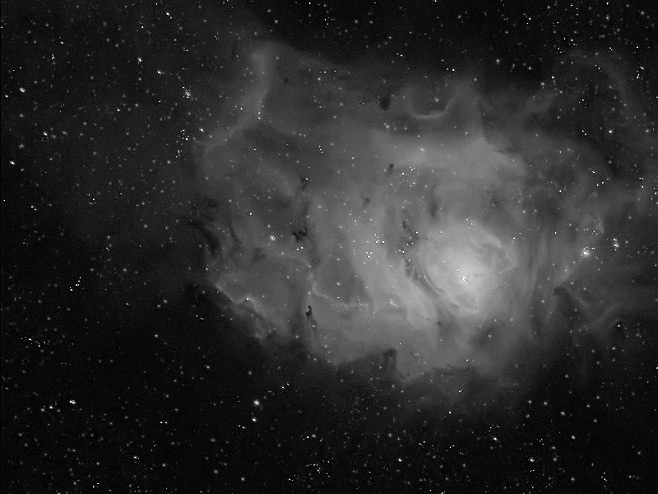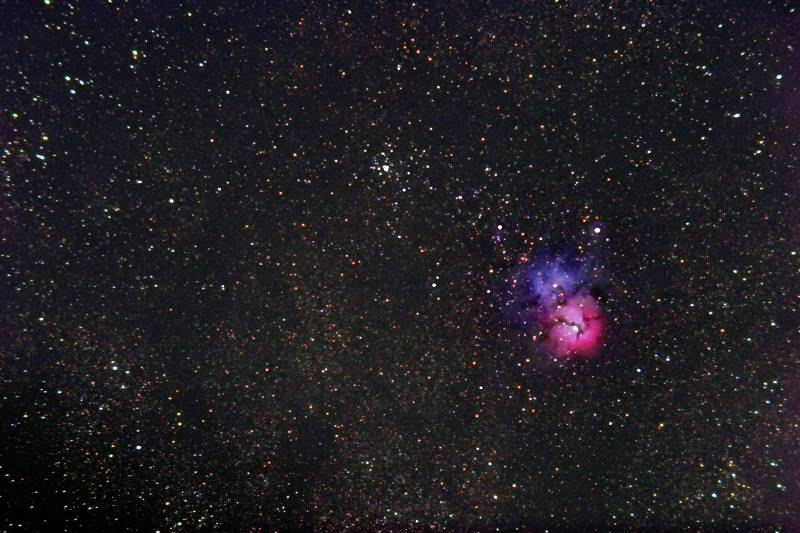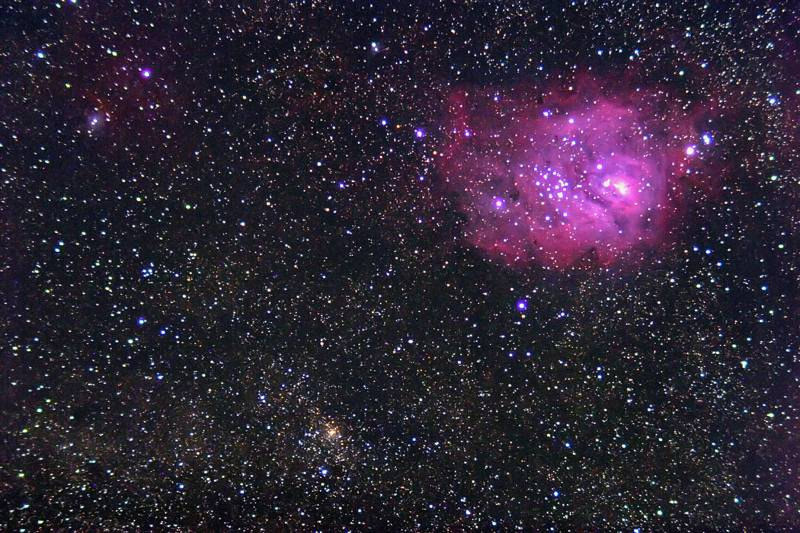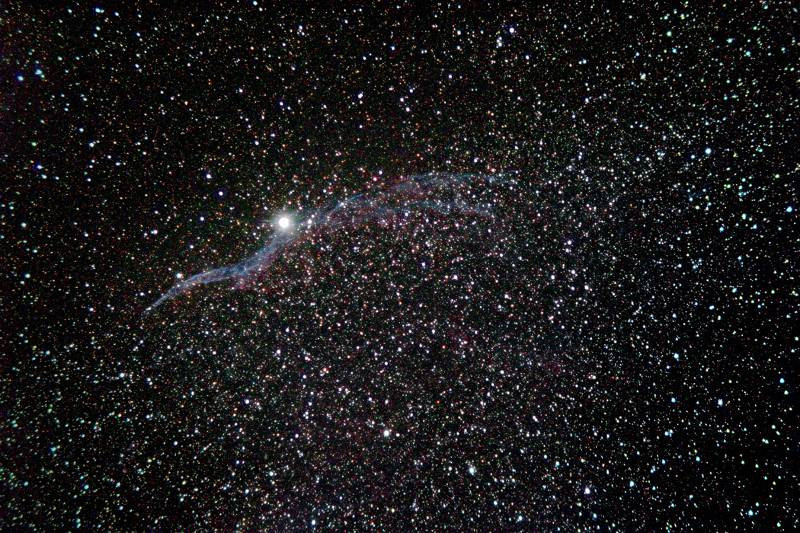

In the talk I gave at the May Lowbrows meeting I indicated that I was researching the purchase of either a DSLR or a CCD camera of some kind to add another dimension to my astrophotography. I even showed some CCD images that I had taken using borrowed cameras of various types. I have continued my research and I thought it was time for an update... or a report from the bottom of the learning curve!

As the summer has progressed I have tried more CCD techniques including h-alpha imaging which I like a lot! My best result was a shot of M8 in h-alpha light using an ST7 CCD camera.
I really like the detail captured with this technique, and the fact that moon glow has basically no effect on h-alpha imaging. What I did not like was the uncomfortable, to me, feel of the equipment. SBIG makes some wonderful instruments but they don’t “feel” like a camera. I thought I needed to take a look at the different options and figure out what I was willing to plunk my hard earned dollars on.
CCD:
DSLR:
And very importantly—used DSLR’s are less expensive than used CCD cameras in the ST7, ST8, ST2000 range.
All this time I have been checking Astromart to figure out just what this addition to the hobby is going to cost. I was looking at CCD cameras in the ST7, ST8, ST2000, HX9 class and at Canon DSLR’s. I was tracking ebay auctions for Digital Rebels and 10D’s. I had it BAD!!!
It was Jeff Thrush that found the 10D on Astromart. It was a weekend and I usually check A-mart from my office—I could not remember my password!!! Jeff being the pal he is e-mailed the guy and purchased the camera for me.
I was anxious to get the camera and when it came I wasn’t disappointed! The camera looked brand new and it looked like a CAMERA! I borrowed a lens, loaded a compact flash card (gotta love digital film) and started to familiarize myself with this beast.
There is at least one disadvantage to a DSLR. As they come from the factory (with the exception of the Canon 20Da) they have poor response to h-alpha light. Just how poor the response will be was a big question in my mind.
A few accessories are necessary to take astrophotos with one of these. A “T” ring is needed to connect to the telescope as you would expect. One also needs the special remote shutter release—my releases that I use with my film cameras don’t work with the digital setup. I also highly recommend an AC adapter to eliminate the battery. There are no time limitations on your exposures if you have the AC adapter.
A couple of good weekends came up in August and I was ready. In order to have an easy focus method I set up my Taurus Tracker and “calibrated” the camera and an eyepiece. This gave me a good focus through the telescope without further adjustment. Because I wanted to use the Taurus Tracker I decided to image through my 4” f6 achromatic refractor.

I was surprised at the amount of red h-alpha that I was able to capture. Still I would rate the response as similar to mediocre film response. Over the next several astrophoto sessions I captured these:

I got more h-alpha than I expected on this one.

The h-alpha is dim enough so most of what I captured was OIII. This will need a lot more than the 30 minutes of exposure that I have given it.
I am looking forward to more clear sky to continue fine tuning my techniques with this camera. It seems pretty easy to use because of it’s similarity to film SLR’s. Of course, I expect that I will “accessorize” this system over the winter. I have already ordered a special low profile focuser to install on my 6” f5 Schmidt Newtonian. This will let me use the Taurus Tracker to guide with on that scope. I will also modify the camera this winter to remove the “hot mirror.” This will let me take h-alpha or OIII exposures with the DSLR.
I am also going to automate the exposure process using a laptop. (Hey I said you didn’t NEED a laptop—not that it wouldn’t be handy). The exposures taken with a DSLR are generally in the 2 minute to 5 minute range—not much time for a nap like the 1 1/2 hour film exposures. The proper software can control the camera to take a series of exposures, for example 60 two minute exposures of an object, relieving me of the necessity of paying close attention to the manual exposure switch.
All in all I am excited about the DSLR. I suspect that I will have a lot of fun as I climb the learning curve. Hey! Any cool new comets coming up?